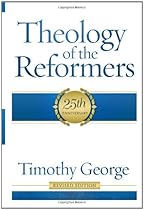

The Treatise of Hernando Ruiz de Alarcón is one of the most important surviving documents of early colonial Mexico. It was written in 1629 as an aid to Roman Catholic churchmen in their efforts to root out the vestiges of pre-Columbian Aztec religious beliefs and practices. For the student of Aztec religion and culture is a valuable source of information.Hernando Ruiz de Alarcón was born in Taxco; Guerrero; Mexico; in the latter part of the sixteenth century. He attended the University of Mexico and later took holy orders. Sometime after he was assigned to the parish of Atenango; he began writing the Treatise for his fellow priests and church superiors to use as a guide in suppressing native "heresy."With great care and attention to detail Ruiz de Alarcón collected and recorded Aztec religious practices and incantations that had survived a century of Spanish domination (sometimes in his zeal extracting information from his informants through force and guile). He wrote down the incantations in Nahuatl and translated them into Spanish for his readers. He recorded rites for such everyday activities as woodcutting; traveling; hunting; fishing; farming; harvesting; fortune telling; lovemaking; and the curing of many diseases; from toothache to scorpion stings. Although Ruiz de Alarcón was scornful of native medical practices; we know now that in many aspects of medicine the Aztec curers were far ahead of their European counterparts.
#46205 in Books B H Publishing Group 2013-09-01 2013-09-01Original language:EnglishPDF # 1 9.00 x .90 x 6.00l; 1.30 #File Name: 0805401954432 pagesTheology of the Reformers
Review
2 of 2 people found the following review helpful. Good supplement to Reformation studyBy BenThis is a short book in comparison to larger historical works on the Reformation; presenting summaries of the theology of some of its key players. It has chapters on pre-Reformation religion; Luther; Zwingli; Calvin; Simons and Tyndale. The inclusion of Simons and Tyndale as 'reformers' might not be expected as they had niche-roles in the Reformation. But their legacy is still significant today; and so it is useful to have a comparative study of their theologies.1 of 1 people found the following review helpful. Standing on the Shoulders of Giants.By DantheManThis is a fabulous work from Timothy George. Theology of the Reformers is clear; easy to read; and incredibly scholarly. George overviews the beliefs of five reformers: Luther; Zwingly; Calvin; Simons; and Tyndale--a daunting task given the multitudes of volumes manufactured by them collectively. Nevertheless George is succinct and summarizes each individual brilliantly.Many today blame the reformation for shattering the universal church of Christ into innumerable factions. Like broken shards of glass; each denomination is severed from the whole and sharp to the touch. This is no doubt an unintended consequence of the reformation. Luther and Zwingly divided over the Eucharist. Calvin detested the Anabaptist schism. And what was originally intended as a correction of the church (from Luther) turned into a full split.Timothy George however addresses the misconception that the Catholic Church of the Middle Ages was one perfectly unified body. Curialism (for complete Papal authority); Conciliarism (desiring accountability for church leadership); Spiritual Franciscans; Waldensians; and the movements of Wycliffe and Huss--all represent different factions vying for power inside and amongst the Catholic church prior to the reformation. To say that the reformation alone caused the many schisms we see today would be dishonest; there was already great diversity of belief within the church long before the reformation ever occurred!With that being said; the reformation was a necessary correction back to Scripture.The selling of indulgences; salvation through sacraments; the office of 'the great middle man" the priest; and the centrality of Mary-- had made the church something that it was not. Apostate. These five reformers--though not unified; were unified in these things: Authority of Scripture; Salvation through faith alone; and the belief that God's Word was for laymen. To say such things was revolutionary. For each of the reformers it guaranteed persecution. Tyndale was martyred. Calvin was banished from France. Simons was hunted down his entire life. Yet God's Word was proclaimed and we today reap the benefits.We are indebted to these men. Each had flaws and George did not shy away from them. Luther; to his great shame; spoke ill against the Jews. Zwingly attempted to blend church and state. Calvin burned Servetus at the stake. It would be foolish to look for perfection in any man especially our heroes. But each man had a conviction to the Word of God and to His conscience. Each man stood against the falsehood and proclaimed the truth--despite great personal cost. "We are like dwarfs standing on the shoulders of giants; thanks to them; we see farther than they."2 of 2 people found the following review helpful. The Gift of PerspicuityBy Paul BasdenI'm glad that the 25th anniversary edition of this book has appeared. I have just read it with delight and fascination. Timothy George neatly summarizes; with broad brush strokes; the 5 primary voices of the Protestant Reformation: Luther; Zwingli; Calvin; Simons; and Tyndale. At the same time; he shows precise shades of meaning in the theology of each Reformer by teasing out their unique contributions to the re-visioning of the church and salvation in the 16th century. His final chapter on living out the Reformation in the 21st century challenged me to lift up my head to see with fresh eyes the miracle of the Gospel. George has given us a robust treatment of the theology of the Reformers that both seeks and attains that most elusive theological gift: perspicuity.